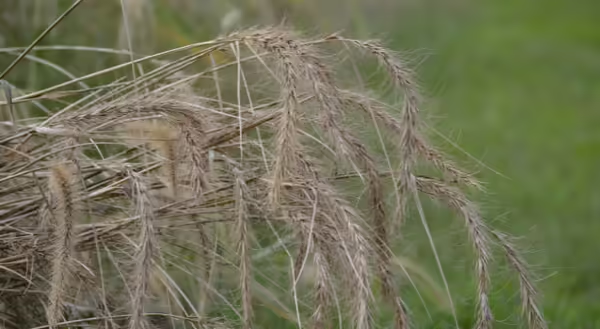
I’m sure many of us have been hiking in the woods and been able to make general plant identifications – I know that’s a maple over there, here’s an oak, that’s definitely a hickory. But what about taking the next step to find out which type of maple, oak, or hickory? Getting an identification down to the species level can be tricky in some cases, especially when there are a lot of plants that are closely related to one another (like the 20 oak species in Illinois!).
There are certain groups of grasses that you may be familiar with too - you see the grass and know it’s a type of crabgrass, a rye grass, or a panic grass, but you’re not sure which one. Understanding the characteristics of a genus, or closely related group of plants, is a great first place to start when telling grasses apart. Sometimes identifying to the genus level is good enough for me, and I stop there. Other times there are some subtle differences between the species that you can observe in the field to tell one apart from another.
Let’s look at the rye grasses in the Elymus genus, of which there are 14 in Illinois. Today we’re going to look at four of them that are found in every county in the state.
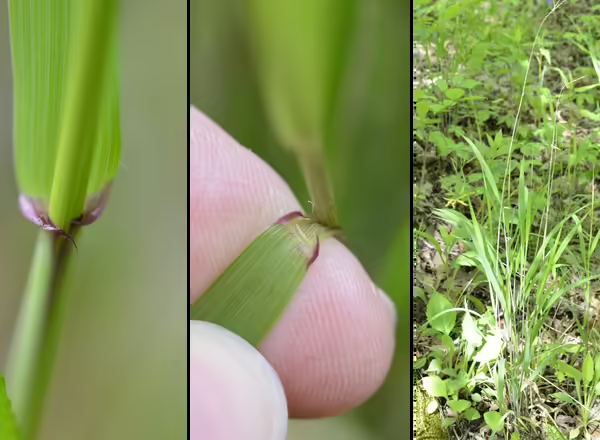
General characteristics of ryes
Since they are in the same genus, there are general identification characteristics that apply to the ryes. They are cool-season grasses, so they will start to green up in spring, flowering in early to mid-summer. They will retain their seed heads into winter or even the next growing season.
They all have auricles, which are small, arm-like extensions of leafy material in the collar region. Auricles arise from the base of the leaf blade and wrap around the stem. These grasses also have a white membranous ligule. The leaves are in general pretty non-descript, but they are about 1/2 to 2/3 inch across, usually pretty shiny, and oftentimes they curve in the collar region so their undersides face up.
If we look at the inflorescences of these grasses, they have spikes with awned spikelets (not all ryes have awns, but the ones we'll look at today do). The way the spike is held (erect or drooping), and the length and direction of the spikelets and awns varies, and can be used to help distinguish them. That being said, typically to tell them apart I need to see them in flower.
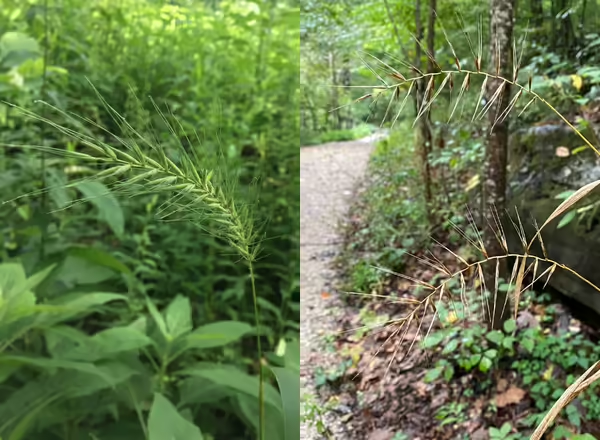
First up – Bottlebrush Grass
I love when a grass’s common name accurately describes the appearance of the plant, and Bottlebrush Grass, Elymus hystrix, does not disappoint! This grass has dark green, hairless, rather floppy leaves. It grows between 3 and 5 feet tall, and you typically find it in the woods or on a woodland edge.
The inflorescence of bottlebrush grass is a spike, 3-8 inches long, which can either be held erect or droop. The spikelets each have a pair of awns that are 1-2 inches in length. The spikelets are held 90 degrees away from the rachis, and they are spread out along the rachis. Altogether this leads the inflorescence to resemble a bottlebrush.

Second – Virginia Wild Rye
Virginia Wild Rye, Elymus virginicus, is next up. This grass can be found in a range of habitats, from the woods to prairies. It too has weak, shiny, hairless leaves and grows between 2 and 4 feet tall.
The inflorescence of this grass is a spike, 2-6 inches long, which is typically held erect, but can droop sometimes. The spikelets are densely clustered along the rachis. The awns are shorter in this grass than Bottlebrush Grass, typically not more than an inch. Both spikelets and awns are held up towards the top of the inflorescence. Another characteristic I look for to tell this grass apart from the next two is that the inflorescence typically emerges right above a leaf, so the bottom of the spike is inside the sheath.
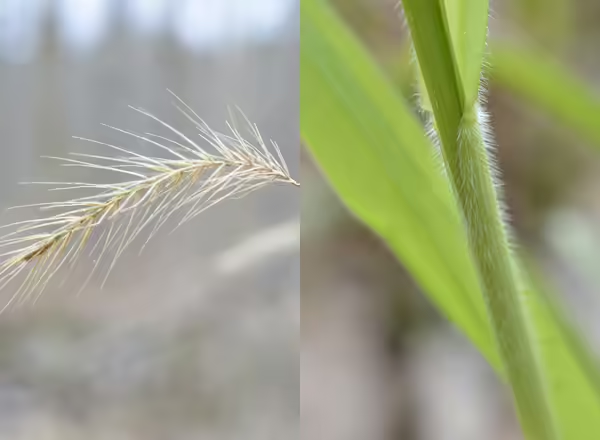
Third – Silky Wild Rye
Elymus villosus, Silky Wild Rye, can be found in woods and woodland edges. It’s a bit shorter, 2-3 feet tall. The leaves of this rye can be slightly hairy, and the leaf sheaths are covered in white hairs that are spreading, meaning they are held out from the stem, rather than hug it.
The inflorescence of this species will nod, or droop to the side. It’s a bit smaller in size than some of the other ryes, only 3-4 inches long. The spikelets are densely clustered in the spike, and point up. The awns of this grass spread outwards slightly.
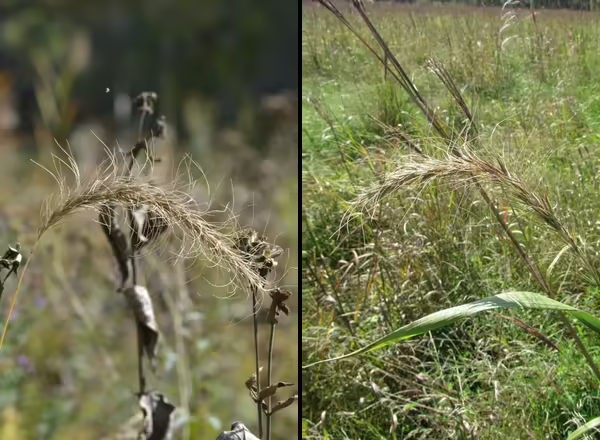
Lastly – Canada Wild Rye
Finally we have Canada Wild Rye, Elymus canadensis. Despite the name, yes, it is a native grass to Illinois. This one prefers some sun, so you’ll find it in prairies and woodland edges, but not typically in dense woods. It will grow between 3 and 5 feet tall.
The spike inflorescence of this grass grows between 5 and 9 inches long, and it droops strongly. The spikelets of this grass are held up towards the top of the inflorescence. The awns, 3/4 to 1 1/2 inches in length, will curve strongly backwards as the grass matures. This produces a very distinctive inflorescence that can be picked out from quite a distance.
Next time you see a rye grass on a hike or on your property, try out these tips to see if you can tell which species you have! If some but not all of the characteristics fit, you may have one of the 10 other species we didn’t talk about.
Never miss a new post! Sign up for our email list.
ABOUT THE AUTHOR: Erin Garrett is a Natural Resources, Environment, and Energy Educator for University of Illinois Extension serving Alexander, Johnson, Massac, Pulaski, and Union counties. Erin develops and delivers high impact programming to adults and youth to help them develop an appreciation for natural resources and to empower them to make small changes to positively impact the environment. Erin’s programming focuses on why homeowners should consider choosing native plants, how to support native pollinators, how to identify grasses, how to identify and manage invasive species, and developing an appreciation for prairie ecosystems.
ABOUT THE BLOG: Grasses at a Glance dives into grass identification, focusing on tips and tricks that make grass identification possible. Get information about native and non-native species, how to tell look-alikes apart, and which grasses you can find in Illinois.